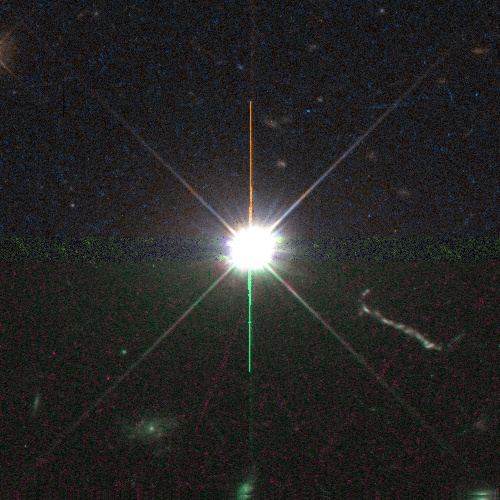Quasars are radio galaxies with an active central region.
Quasar 3C273 is the brightest af all known quasars.
Despite the huge distance, almost two billion light years, this quasar can be also seen with naked eye.
Astrophysik: Fenster zum Kosmos
[ Sitemap ]
[ info ] This website was created by the MPI for the History of Science.
 Scene
Scene


 1st Slide
1st Slide
 Branching Point
Branching Point
 Module: Astrophysik: Fenster zum Kosmos
Module: Astrophysik: Fenster zum Kosmos Sequence: Start
Sequence: Start Branching Point: Windows to the Universe
Branching Point: Windows to the Universe Slide: The Effelsberg Radiotelescope
Slide: The Effelsberg Radiotelescope Back
Back


